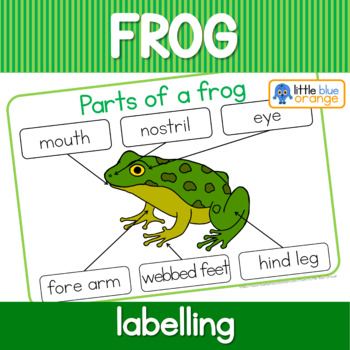

Scan through this book to see up-close-and-personal its main anatomical parts including those long hind legs for. Digit remnants Ī 2018 study on horse foot morphology has suggested that the frog is actually composed of remnants of digits II and IV. The worksheet Body Parts - Frog teaches the student the frogs body parts by recognizing the part and identifying its name. You can almost hear this bullfrog croaking. The frog is anatomically analogous to the human fingertip. If exposed to constant wet or damp environments, the frog will develop a fungal infection called thrush. For good health, the horse requires dry areas to stand. The compact body has been attained by a reduction of the number of trunk vertebrae and the fusion of tail vertebrae into a single rodlike bone, the coccyx, or. In the free-roaming horse, it hardens into a callus consistency with a near-smooth surface. Adult frogs and toads are easily recognized, by the layperson and specialist alike, by the short body and elongated hind limbs, the absence of a visible neck, and the absence of a tail. In the stabled horse, the frog does not wear but degrades, due to bacterial and fungal activity, to an irregular, soft, slashed surface. The frog also acts like a pump to move the blood back to the heart, a great distance from the relatively thin leg to the main organ of the circulatory system. Lots of webbing between the frog's toes puffs up with air like a parachute, holding the frog aloft as it sails from tree to tree. The green frog is known for being one of the least picky eaters and will consume just about any insect or animal that it can swallow. The color of the frog varies between horses and can have no pigment making it cream colored, or with pigment fully or partially making it darker, and of a rubbery consistency, suggesting its role as a shock absorber and grip tool on hard, smooth ground. The Senegal running frog, as its name suggests, raises its body off of the ground and runs from place to place Frog Feet Flying frogs The Malaysian flying frog soars from branch to branch with the help of its feet. In its midline, it has a central groove ( sulcus) that extends up between the bulbs. Note the coloration on all parts of the body. Its thickness grows from the front to the back and, at the back, it merges with the heel periople. will dissect a preserved frog to observe its internal anatomy. Make transverse (horizontal) cuts near the arms and legs. Cut along the midline of the body to the forelimbs. Use scissors to lift the abdominal muscles away from the body cavity. The frog is a V-shaped structure that extends forward across about two-thirds of the sole. Place the frog in the dissecting pan ventral side up. The frog is triangular in shape, and extends midway from the heels toward the toe, covering around 25% of the bottom of the hoof. Frog vocabulary part of body vector image on VectorStock. The frog is a part of a horse hoof, located on the underside, which should touch the ground if the horse is standing on soft footing. Enjoy this Parts of a Frog Diagram freebie The file includes 4 pages:.


 0 kommentar(er)
0 kommentar(er)
